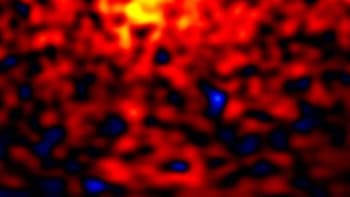Endless Universe: Beyond the Big Bang
Paul J Steinhardt and Neil Turok
2007 Weidenfeld & Nicolson
£20.00/$24.95 hb 304pp

“Before time? What do you mean before time?” says the Doctor to the Beast in a recent episode of the TV show Doctor Who entitled “The Satan Pit”. The intrepid Time Lord, as we all know, lives in what we might call the conventional universe, which has a definite beginning, no end and nothing — not even time — exists otherwise. But is this picture true? Endless Universe is a highly readable account of two scientists’ struggle to imagine the universe, and what emerges is that this conventional picture is by no means the final word in cosmology.
Our quest to understand the universe has a long and venerable history. But the real thrill of trying to understand nature is that although we come to the table with an incomplete set of tools, we can still fashion theories that are remarkably accurate and effective. Over 70 years after Einstein claimed that the most incomprehensible thing about the universe was that it was comprehensible, his comment still holds true.
The early years of cosmology were heady times. On the one hand, the frontiers of observation and measurement were pushing outwards at an incredible rate, showing that the universe was a dynamic and evolving place. On the other, the application of the new quantum theories was giving a concrete picture of how elements were synthesized in the early universe, which, when put together with Einstein’s new theory of gravity, gave a compelling history of the universe. Yet this new “cosmology” was a marginal area of science, because adding up the numbers between observation and theory was fiendishly difficult.
Gradually, however, these details were refined and the rough and ready Big Bang model was spectacularly confirmed. There was just one niggling problem: the universe had to have started out in such a precise — and unlikely — state that it seemed as if it must have been created rather than just having happened. Such a conclusion is perhaps theologically acceptable, but, as the authors of this book are at pains to point out, science is about what can or cannot be proved, not about what we wish to be true.
The real narrative of the book begins at this point, with the theory of inflation — the first attempt to take the Big Bang beyond the frontier of tested physics. Inflation was an attempt to take ideas from (then) contemporary high-energy physics and apply them to the early universe to provide a moderating effect. The result was a kind of cosmic smoothie maker that could take a wide range of possible beginnings, and churn out very similar cosmologies. Yet inflation does not answer the question of the beginning, and — like the Doctor — we are left wondering if anything could indeed happen “before time”.
Paul Steinhardt and Neil Turok ask us to contemplate the startling possibility that this question has meaning. Having built the case for inflation, they proceed to pick at the detail, describing how inflation has its own “niggling problems”, and they argue that the time is ripe for a new idea. One by one they show that the problems inflation was designed to solve can also be solved by an alternate idea: the cyclic universe. In this model, the universe has been in existence forever — dying and then undergoing a cosmic rebirth every trillion years or so. This may sound far-fetched as it is difficult to see how we can go through a singularity where everything, including space and time, ceases to exist, but as the authors explain, this difficulty arises because we are used to thinking in three dimensions.
String theory — the biggest theoretical advance in cosmology since inflation was suggested — has brought with it a new understanding of space and time. It achieves Einstein’s goal of bringing gravity under the quantum umbrella, but it does so at a price. In order to be consistent with quantum mechanics we need to live in 10 (or even 11) dimensions! For many years, string theorists avoided cosmology because it was not possible to build a realistic universe, but recent developments in the understanding of the structure of these extra dimensions, as well as a revolution in the way we deal with them, meant the time was ripe for a radically new cosmological model.
Steinhardt and Turok stepped in to provide one. In their model, the universe is simply a slice (known as a brane) through these extra dimensions, and the Big Bang was a collision of branes — a huge cosmic thunderclap. This model builds on an idea called M-theory, in which the strings live on two walls at the end of an 11D space–time. Applying the usual rules of string theory leads to a general picture in which these walls can move across the canyon separating them, and occasionally (every trillion years or so according to Steinhardt and Turok) slam into each other. It is this slamming together that is responsible for what we see as the Big Bang, although from a higher-dimensional point of view it is a collision rather than a singularity.
This book may not convince you that the authors are right. In fact, it is only fair to point out that most of the scientific community does not accept their model; and that many key tenets have not been proven. Nevertheless, this book captures excellently the excitement of scientific advance, and the real thrill of coming up with a new idea. One message the authors communicate clearly is that we should never accept something simply because most people say it is true, but should constantly challenge and look for alternatives to any picture that cannot be rigorously proven.



